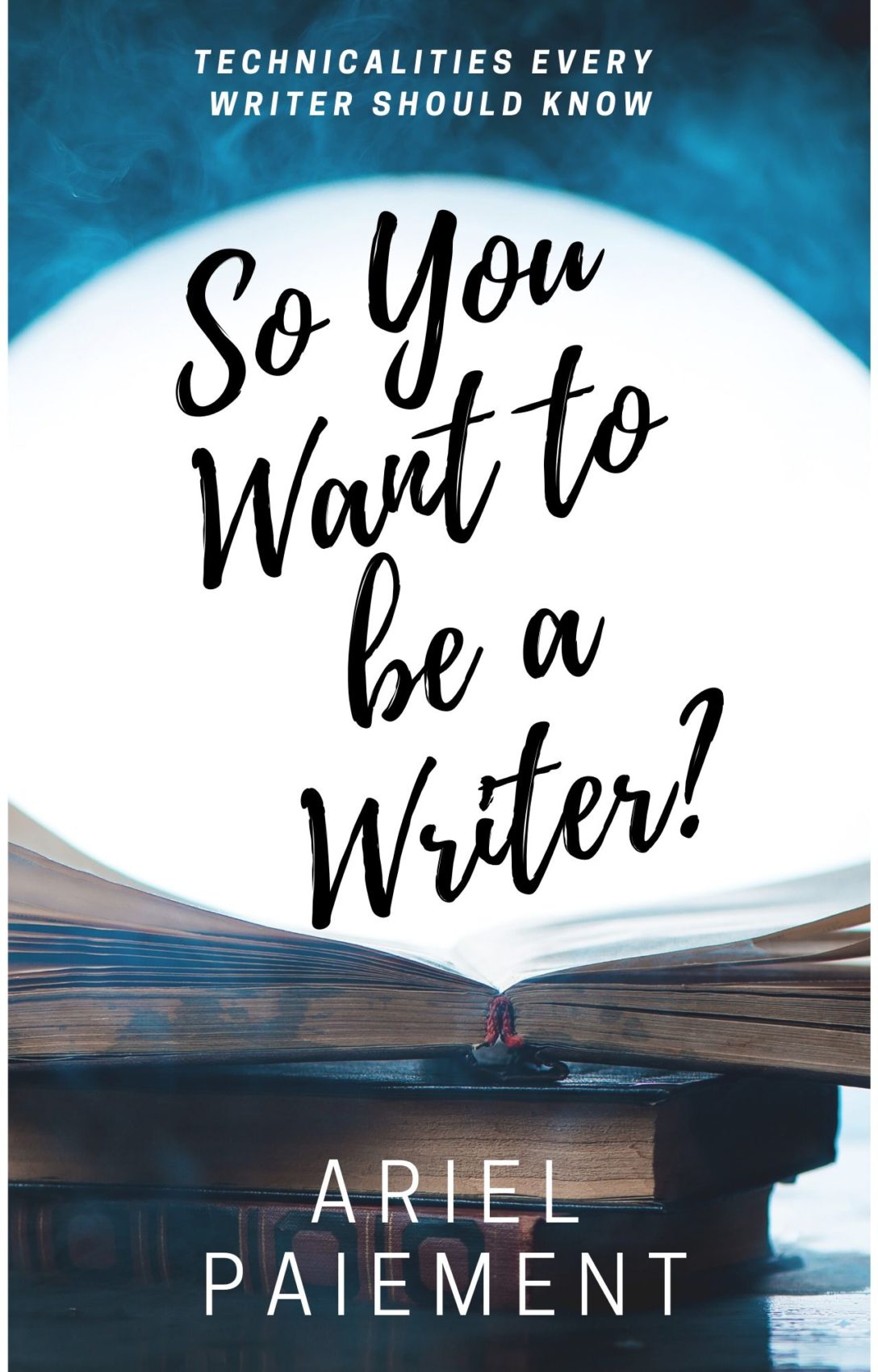Introduction
We’re going to take a break from some of the really technical stuff this week to discuss a problem all writers go through at some point: imposter syndrome. This is the point where you’ve finished writing something or you’ve published a book, maybe two or three, and you suddenly think something along these lines:
- What am I even doing?
- No one is going to read this.
- Can I even consider myself an author?
- All I’ve done is post my book up on Kindle with Amazon, so I probably don’t qualify as a real writer. If I tell people I am, I’m probably lying to them!
- I’m too young to say this is my career.
- What am I thinking trying to make money off this? I’ll never make it.
- No publishing house wanted me, and there must be a reason, so why am I even bothering?
- Indie publishing isn’t real publishing, so can I really say I’m a published author?
- My good reviews are probably all coincidence.
- I’m not as good as a real author.
- I don’t have enough books out.
- I got bad reviews, so that must mean my writing is awful.
And so on and so forth. These may seem out there to you now if you’ve never experienced this before, but most of us go through it. These thoughts and questions are ones that real authors and writers I’ve spoken to have said run through their minds, even after they have several or even many books out. It happens somewhere after the occurrence of the giddy feeling of finally being in print or releasing a new book. And, frankly, it sucks. You become your own worst critic and not in any kind of healthy way either.
Addressing the Problem
So, we’re going to talk about a few of the reasons for not believing the lies you tell yourself and about how to handle these feelings when they come up. Let me preface this discussion, however, by leveling with you. If you’re just putting your book out there for your 60 seconds of fame and you aren’t doing any work or trying to really do well, these feelings are merited. Then again, if you’re one of those individuals, you probably don’t feel any of this because you already know all you need to know and have a great book. Sarcasm aside, chances are, if you’re feeling these things, you’re actually doing something right. You recognize that you have areas where you can improve or spots where you’re maybe not doing so well. The problem is, you have to know when there is a legitimate concern and when there is not.
I can’t address all of the thoughts that will run through your mind on this topic, but let’s talk about some of the most common misconceptions that can lead to feelings of inferiority or self-hatred like we saw in the statements and questions above. Some of these may get a little bit blunt or very real in the responses to the issues. You’ve been warned! But seriously, I do address some of these in very real terms with concrete facts to help you to understand how you can combat the false thinking and the lies that plague writers who have imposter syndrome.
1. Indie publishing isn’t real publishing.
This is just plain wrong. Indie publishing IS publishing. Now, it doesn’t have the benefit of the gatekeeping function editors and agents provide, so there’s plenty of junk out there. There are plenty of people who publish just to be able to say they’re published. This has, of course, given a bad rap to those who indie publish, whether they’re one of those individuals or not.
However, you should know that if you’re really doing the leg work, indie publishing is usually just as much, if not more, work than traditional publishing because the author has to find their own editor or edit the entire book themselves, get a cover designer or figure out how to create their own, and be their own salesman. You have to do so many different things and wear so many different hats as an indie author. It’s hard work.
So don’t buy into the lie that it isn’t publishing or that you shouldn’t consider yourself a published author just because you indie published.
More and more people, including many good authors, are going this route because publishing houses aren’t providing them with the support and solid editing framework they need. They turn to freelancers to help them with the areas where they can’t do it, and then they do what’s called going wide (selling on as many online platforms as possible). But enough about indie publishing on this point. Let’s move to the next point.
2. I’m not as good as a real author.
First off, why are you comparing yourself to others in a negative way? Does being better than someone else or worse than them make you more or less an author somehow? No.
Being an author has nothing to do with whether or not you’re better than another author.
In fact, I’ve seen more than enough books from authors published by traditional means that suck. It’s not a pretty fact, but it is a fact nonetheless. Authors both indie and traditional can be bad writers. Unfortunate, but true.
Don’t judge your status as an author based on where you rank in comparison to the authors you grab off a Barnes and Noble bookshelf. (And p.s. Some of the titles you find on a Barnes and Noble bookshelf may actually be indie published books. More and more indie authors are getting their print and digital titles into physical bookstores and their online equivalents.)
Focus on improving yourself and looking at those better than you for new ways to grow and improve your own work. Do not focus on how much you stink at writing in comparison to someone else.
3. Good reviews are a coincidence and bad reviews mean my writing sucks.
Just no… Listen, your book can’t be all things to all people. Unless you’re getting only negative reviews, all of which are saying various parts of your writing like plot or characterization stink, do not assume your negative reviews mean you suck at writing! Usually, they’re an indication that a particular individual did not like your writing. It wasn’t their cup of tea, and they felt the need to tell everyone.
That’s fine.
Same goes for mixed reviews where they say both good and bad things (to be fair, these are the majority of my reviews unless I just loved the book too much to pay attention to flaws). There will always be someone who is discontent with something and feels the need to vocalize it.
Think of it this way. They’ll get rid of readers who will dislike the work for the same reasons. So less bad reviews for you.
Oh, and the good reviews are not coincidence. Just as the bad reviews are someone’s negative opinion about your book, good reviews are someone’s positive opinion about the book. Unless you bribed them to write it, which I doubt is the case, it’s not coincidence. So you should be proud of yourself and excited to see those good reviews come in. They’re honest expressions of someone’s delight with your work. Don’t let imposter syndrome steal the joy out of seeing those types of reviews!
4. No publishing house wanted me, so that must mean my writing is worthless.
Nope. It doesn’t. I mean, maybe it’s true in some cases, but publishing houses are looking for one thing and one thing only: what they think they can sell. For new writers, they add a criteria to that: what they think they can sell with minimal money spent.
Most publishing houses are about the bottom line, not about you. And furthermore, one of the reasons authors are moving to indie publishing has to do with the fact that many publishing houses don’t have the time to really edit or work with a manuscript, so they’ll only buy a manuscript they can pretty much throw into print after a proofread and basic edit.
They’re not going to put resources into an untried author, and many times, they aren’t even willing to do that for authors they’ve worked with for a while because authors move on to the highest bidder. Why develop talent for your competitor?
So, if publishing houses aren’t accepting you, it doesn’t automatically mean your work is trash. It often just means it isn’t what they’re looking for, isn’t something they think they can sell as is, or isn’t something they think they can sell with minimal advertising or marketing on their part.
5. I don’t have enough books out or I’m not old enough to claim this as my career.
Okay, to be quite honest, this one is a very real concern for many. I’ve felt inadequate due to this one before. But here’s the thing. Age isn’t the determining factor in whether or not you’re a good writer, necessarily. Experience is!
You can have a fifteen-year-old who is a better writer than a thirty-year-old. Why? Because the fifteen-year-old has been working at it for the last five years and has been seriously trying to improve while the thirty-year-old has no experience in writing and is just starting out.
I’ve edited for clients quite a bit older than me before, and I’m able to do a lot to make their writing and their narrative better. Why? Not because I have a super power or am special, certainly. It’s because I’ve been doing this much longer than they have and have far more knowledge than they do in this area as a result. So age shouldn’t be the first thing you look at to determine whether or not its your career.
As for the other issue, you don’t go anywhere if you let yourself become paralyzed because you don’t have many books out. Every author must start with a debut novel and build up from there. Buy into this lie and insecurity, and you’ll be writing books until you’re grey and old but none of it will ever be published.
Publish that first book when it’s ready, and publish another when it’s ready. Have a publishing goal and a schedule for when you want to have things out so you’re consistently building up content, but stop worrying about how much you have out right now. It will build up as you go. I promise!
6. I’ll never make it. Why did I ever think I’d make money off this?
Last one! This one is a huge concern for almost any author. When you don’t see those sales numbers moving and you’re wondering how you can make the sales you need to gain traction, this one’s a really tough one to work around. I’ve been here, and I continue to be here as things don’t do so well at times. It’s depressing to see those low numbers.
But here’s the thing.
Other people have made it.
Not a tiny fraction either. Granted, you may not. Some people just never do, and if that’s what an honest assessment reveals about your trajectory, then fine. Keep writing but find another job you can do to bring in your main supply of income. It’s okay to do that, whether permanently or temporarily. But don’t buy into the idea that you can’t ever make it just because you haven’t yet.
Please know, I don’t advocate pinning your hopes on a pipe dream. I do believe that you should work on this over time. Work a regular job with decent pay while you get it off the ground. Don’t be stupid about how you go about it. But keep reaching for that end goal because people have made it, and if you are able to learn what works well for you as you experiment and work on getting to the goal, you can too.
Conclusion
Okay, so this was a really long post! But hopefully this has been helpful to you. This is a common problem among writers of every kind, and it’s not talked about as often as it should be. It’s tough to admit our insecurities to the writing community, especially if one of those insecurities is that we’ll be invalidated as a writer.
But it’s also really important to talk about it. It’s important to address the fears we have so we’re not paralyzed by them and kept by success only because we were too insecure or scared to move on. Don’t let that be you!








